While my state still boasts of woodlands, plains, and waterways with wildlife abounding, the region is a far and primal cry from the fauna-filled wilderness it once was. Prior to Euro-American settlement, Arkansas was a documented home to elk, American bison, red wolves, and mountain lions. Though we’re a few hundred miles southeast of their known historic range, I’d imagine a stray grizzly or two wandered down the Arkansas River in search of new territory. Black bears were once so thick that we were known as the “bear state.” This was long before that left-coast “bear state” was even an idea. And in the river sloughs, backwaters, and oxbows, lurked an even more ancient beast of terror and wonder.
Nowadays, we’ve got a few elk roaming wild in some of the more remote and rugged areas, but any bison you’ll encounter are behind a fence. The red wolves are long gone, pushed to their last holds in the dense forests of Appalachia far to the east of here. Modern Arkansas mountain lions are more myth than flesh and blood. Though a few still trek through the Natural State now and then, there’s not been an established breeding population since that sort of thing was looked for. And while black bears are back to recovery-level numbers, if ever a grizzly poked around in the Ozarks the great bear was ultimately pushed back west where it’s ancestors are now corralled and stranded on virtual islands, land that we haven’t figured out how to effectively exploit just yet.
But that old one in the slow waters, the armor-plated relic whose base forms emerged while dinosaurs ruled the planet, is still here. Alligators never left. In fact, a few live within the city limits of a nearby semi-metro area as embodiments of cryptic truth behind local urban legends. Wild gators are also found in scattered pockets all around this most northerly latitude of their range. I’ve personally viewed a few in various locations. And about 30 years ago, I had an up-close encounter with one in, of all places, a small stock pond.
The memory of that first visual is still a bit jarring, and even though it was with my own eyes it was loaded with skepticism. Surely it was just a floating log. While the old-timers in my hometown often told stories of gators in the bottoms (mostly, I thought, to keep me out of their prime frog-gigging spots), this pond was located in our modest uplands and beyond, though only slightly, the animal’s known range. And while I largely dismissed those tales spun by the bench sitters at the boat dock as bullshit, the scuted beast lounging in this basin of warm brown water was impossible to dismiss. What I saw clashed with what I thought I knew and the conflict in my brain left me dumbfounded for, I’m sure, several minutes. How it wound up there — in a pond in the middle of a 100-acre cow pasture with no connecting body of water for miles — is still to this day a mystery.
Back then, my hunger to fish was insatiable. When I set my mind to wet a line it didn’t matter where or for what. If there was water nearby, no force on heaven or Earth could stop me. Curiously, the gator’s presence made my desire to fish in the pond even stronger.
Looking back on the experience, it falls in line with a lifelong curiosity and even an affinity for creatures that can do serious damage. Don’t get me wrong, I’m not a thrill seeker who tempts fanged, clawed, or horned fate on a regular basis, although I once did capture a timber rattler with my bare hands and ,on another occasion, pinned a copperhead’s head with thumb and forefinger for the sheer hell of it.
But the archosaur watching me with a prehistoric stoicism was something different. At around seven feet in length, here was an animal physically larger than me by a good margin. In contrast to a possibility of death by the sinister yet secretive lethality of venom coursing through my veins and destruction at the cellular level, the alligator was well-equipped for gory violence, with tools to tear limbs from torso and consume my meat and bone one bloody chunk at a time. Dying by way of serpent fang would at least leave a corpse. Death by gator would leave only gator shit.
It was a small pond, less than half an acre. The banks were fairly steep and clean, and I recall that the gator floated near the pond’s center with its snout pointed directly at me. My eyes were locked onto the alligator as I eased to the water’s edge and pitched toward a brush pile.
The fishing was good. I caught a couple of largemouth, pale and silvery from the murky waters, on my first few casts. They fought like thugs — an initial vicious hit and one or two short, fierce runs before settling into a few headshakes and coming to hand. The alligator observed it all without moving for at least half an hour. Then I remember looking up after unhooking the fourth or fifth bass and the alligator seemed to be closer. Tiny fading ripples on the pond’s mirror surface confirmed that it wasn’t my imagination. For the next hour or so, the gator followed me with a slowly shrinking buffer until he was finally no more than 15 yards away. But after so much time in relative close proximity, the alligator became less the focal point of my attention. I’d settled into the instinctive rhythm of casting, of becoming a predator, with only glances in its direction for the comfort of confirmation.
Just after getting into double digits on fish, I set the hook on what turned out to be the largest bass of the day, a bass that actually clicked the drag a few times. As the fish tired and I made my way to the pond bank, the muddy waters surged and a wide-open reptilian maw lunged at the chunky bass. The gator’s own predatory urges were apparently tempted beyond its capacity to resist.
I skidded the fish to the bank, barely beyond those vice-like jaws. The gator slammed on its brakes mere feet from me, clouds of silt billowing from the pond’s bottom as I shrieked and scrambled up the pond bank — not unlike the baboons I’d watched shrieking and scrambling from Nile crocodiles in so many nature documentaries -- dragging that hapless bass behind me.
Separated from potential danger by yards now, I caught my breath and muttered a few swears, grinning at the wild drama that had unfolded so unexpectedly in a pastoral setting where the most treacherous four-legged animal around is usually an irate cow. And while I’m fairly certain that the gator had no intention of taking a swipe at me, it was also clear that there was zero regard for the pale, two-legged mammal standing on dry land waving a stick in the air. Thinking back on that moment, the uncertainty about my place in the hierarchy is both unsettling and yet affirming.
After unhooking the bass, I tossed it back in the water far from the alligator. Then we, the gator and I, observed one another. While humans share some basic brain functions with reptiles, I can’t speak to what was on its mind and won’t offer even the feeblest attempt to understand the perspective of a creature whose direct lineage runs older than the oak trees. The bottomless black of those primeval eyes held secrets that I would always be too young to understand.
But I know the thoughts of that modern primate holding a fishing rod trended toward an uneasy respect, a combination of fear and excitement that took him fleetingly back to days when our perch at the top was far more precarious. It was the realization that even in this mostly sanitized and tamed land, there was still the remote possibility that one poor decision could change his role from predator to prey.




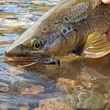
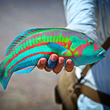





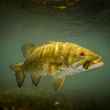
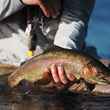












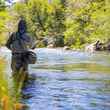


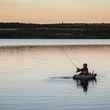
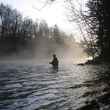
Comments
Ron Keller replied on Permalink
Excellent writing. Clear, intelligent, not overly dramatic yet still exciting. Love this text. Cheers from Switzerland
Pages